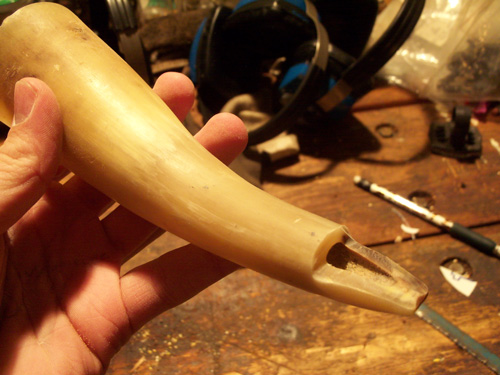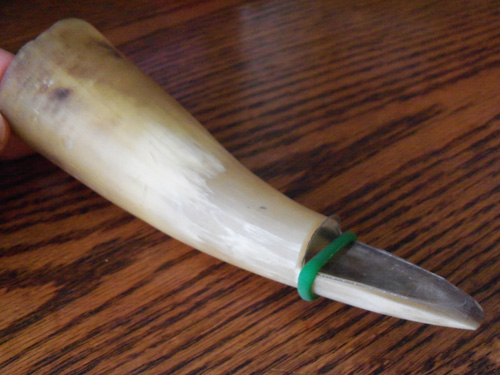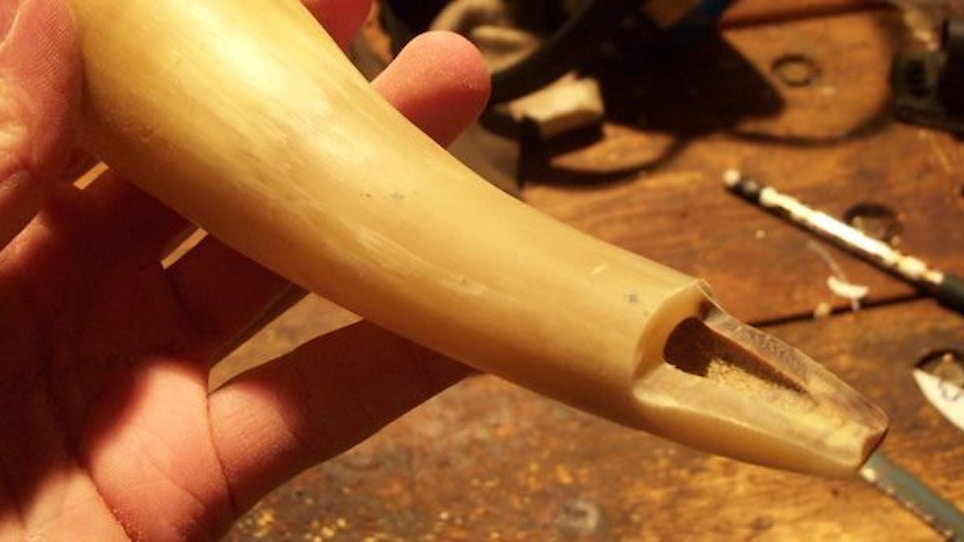Predator hunting requires a great deal of patience and skill, but also an incredible amount of practice to bag a coyote. Hunters go to great lengths to acquire the absolute best methods of calling coyotes, whether it’s an expensive Foxpro caller or a professional-grade open-reed caller.
However, for hunters looking to enjoy coyote hunting without spending a lot of money, learn how to make your own coyote howler out of bull horn.
Getting Started
The first thing to do once you’ve got your bull horn is mark where you are going to cut. Depending on the size of your horn, your measurements may vary. However, if you stick to the following measurements, you should be okay. Your first cut needs to be 1/3 of the depth of the horn and about 2½ to 3 inches from the tip of the horn. Using a bone saw or a hacksaw, cut a 1/3 of the way straight down into the horn. Then cut parallel with the horn from the tip to your first cut. Don’t worry about being precise at this point, because you still have a great deal of shaping, sanding, cutting, and grinding left to do that will allow you to manipulate the call how you please.
 You should now be looking at a horn similar to the one in the photo. Because the horn is hollow, you already have an air channel. All you need to do is shape the soundboard and the reed.
You should now be looking at a horn similar to the one in the photo. Because the horn is hollow, you already have an air channel. All you need to do is shape the soundboard and the reed.
When shaping the soundboard, the easiest method you can choose is to use some sort of belt-grinder or sander. Slope the end of the horn downward. The degree and length of your slope will vary depending on your specific horn. Experiment with your soundboard to find the right dimensions that will provide the best sound for your call.
Building the Reed
Next, you’ll need to build your reed. You can purchase inexpensive Mylar (.014 thickness) or you can choose to recycle an old milk carton, and simply cut out a section of that to shape your reed. Your reed length, width, and thickness will all affect your call's sound. Keep in mind though, that when it comes to reeds, thinner is better.
When placing the reed on the soundboard, bend the end of the reed at a 90-degree angle to create a seal with the rest of the horn. If any air can escape through the hole that leads to the rest of the horn, the call will not function properly. Remember to tune your reed to the edge of your air-channel — no more and no less. Then secure the reed to the soundboard using a rubber band or a castration-band (available inexpensively at livestock stores) to keep your reed in place.
Tune the reed to create the right noise. Do so by trimming it to fit over the air channel differently. Make it longer, shorter, thinner, or thicker and experiment with different lengths of the soundboard and different degrees of curvature for the end of your soundboard.
If you spend the time and effort involved in perfecting this call, then you will definitely love what you end up with. The bull horn increases the volume of your call without a doubt. If coyotes are anywhere around you, they will hear you while using this call.Once you’ve got your call tuned and ready to go, start practicing to perfect your calling techniques, and get out in the woods!







